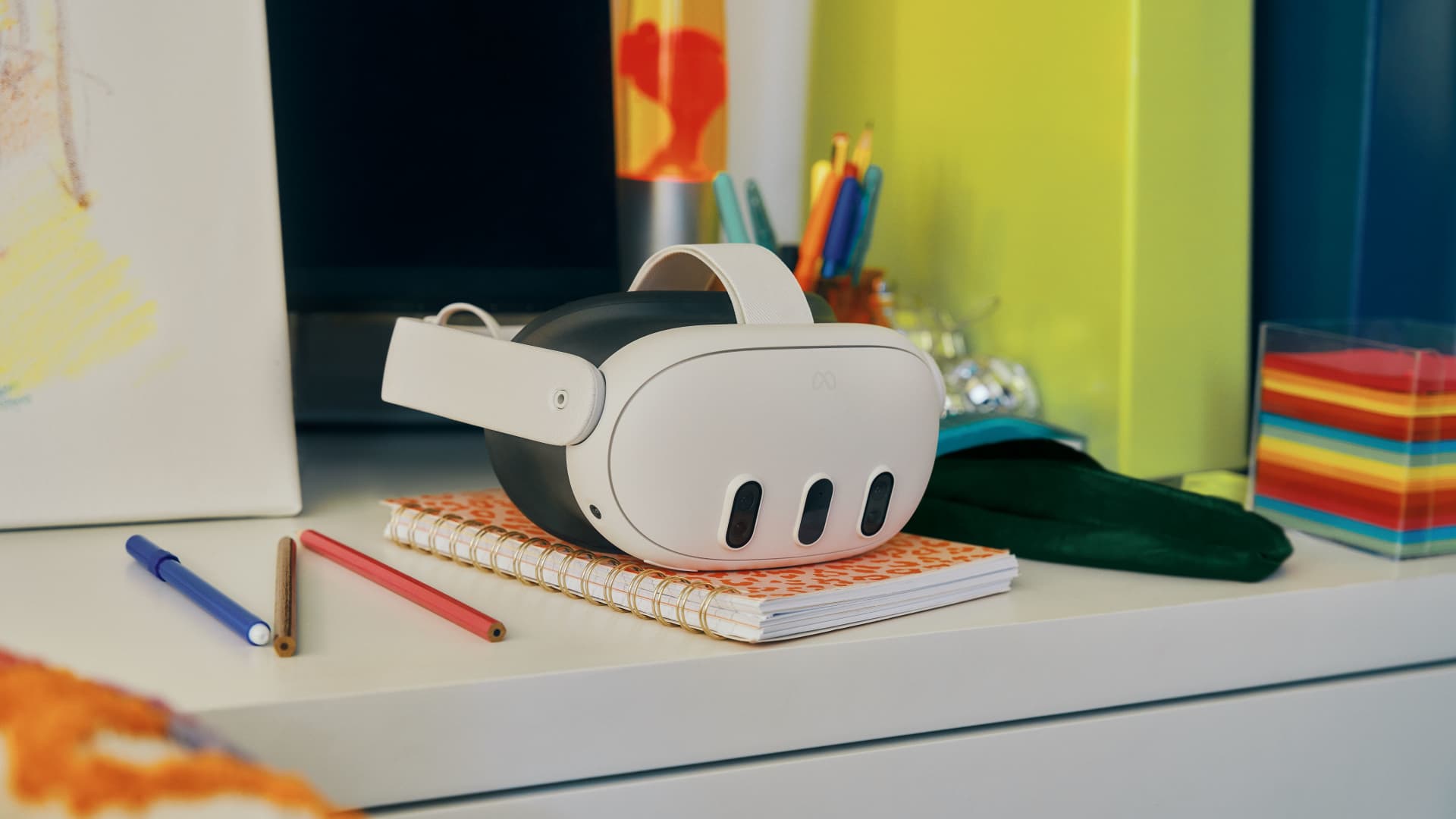Meta announced the release of Quest 3, the highly anticipated sequel to the best-selling VR headset, on Wednesday.
The Quest 3, priced at $499, is $200 more expensive than its predecessor. However, it boasts a more powerful Qualcomm chip, improved screens, and a feature called “passthrough,” which is expected to be a key feature on Apple’s competing Vision Pro headset.
Preorders for the Quest 3 opened on Wednesday, with shipping set to begin on Oct. 10.
The standout feature of the Quest 3 is its ability to seamlessly view the real world while wearing the headset, reducing the feelings of isolation and making it more comfortable for extended use. Users can simply double-tap any part of the headset to switch to the “passthrough” mode and see their surroundings.
Other enhancements include the use of “pancake lenses,” first introduced in Meta’s $1,499 Quest Pro, which offer sharper images and higher resolution.
This release from Meta comes as it prepares to compete with Apple in the virtual reality market. Industry experts believe that Apple’s entry could expand the market and create new opportunities, similar to how the iPhone revolutionized smartphones.
Currently, Meta’s Quest 2 leads the VR headset market, with nearly 10 million units sold last year. In comparison, Apple’s Vision Pro headset won’t be available until next year and is significantly more expensive, starting at $3,499.
Despite Meta’s success in sales, it remains uncertain how many Quest 2 owners use the device on a regular basis, and the VR industry is still searching for its killer app or must-have experience. Meta has invested over $21 billion in its Reality Labs division, which focuses on headset and VR software development.
Passthrough
CNBC had the opportunity to test the Quest 3 through an hour-long demo before its launch. The demo included gameplay and showcases of the hardware’s capabilities.
The Quest 3 features significant updates, such as a new headband strap and a slimmer headset shape. The headband helps distribute weight evenly by splitting the top strap into two. The headset weighs 515 grams, slightly heavier than its predecessor. The speakers have also been improved to provide high-quality audio.
The controllers have been updated to provide better haptic feedback. The Quest 3 utilizes Qualcomm’s Snapdragon XR2 Gen 2 chip, which offers power and energy efficiency comparable to a mobile processor rather than a PC processor.
The chip’s extra power enables displays with a resolution of 2,064 x 2,208 per eye, higher than the Quest 2’s 1,832 x 1,920 per eye. This increased pixel density enhances text readability within the headset. Meta estimates a battery life of approximately two hours and 12 minutes.
During the demo, CNBC tried out Samba de Amigo, a $30 game from Sega that utilizes the Quest 3 controllers as maracas. The reviewer enjoyed the game and even broke a sweat.
The most notable improvement in usability is the emphasis on passthrough. The Quest 3’s cameras can display live video on the headset’s internal screens, providing a transparent glasses-like experience that can also show computer windows and graphics. The Quest 3 can also scan the user’s surroundings, allowing apps to warn of potential collisions.
While passthrough is currently considered a nice-to-have feature, it is a crucial component of mixed-reality experiences that blend computer graphics with the real world. In practice, it enables users to temporarily exit the virtual world without removing the headset. During the demo, the reviewer was able to communicate with Meta officials while wearing the headset, a significant improvement compared to the previous version.
The Quest 3’s launch will inevitably draw comparisons to Apple’s more expensive Vision Pro headset. However, Meta aims to match many of its features, or at least provide similar alternatives, at a fraction of the price. Meta’s lower-volume product, the $1,499 Quest Pro, offers a similar experience.
One major distinction between Meta and Apple is their vision for the Quest’s use. Meta sees it primarily as a gaming device, while Apple positions its device as a computer. Meta has already lined up 500 games and apps for the Quest 3, including titles like Ghostbusters, Assassin’s Creed, and a Stranger Things experience developed in collaboration with Netflix.
Denial of responsibility! Vigour Times is an automatic aggregator of Global media. In each content, the hyperlink to the primary source is specified. All trademarks belong to their rightful owners, and all materials to their authors. For any complaint, please reach us at – [email protected]. We will take necessary action within 24 hours.


